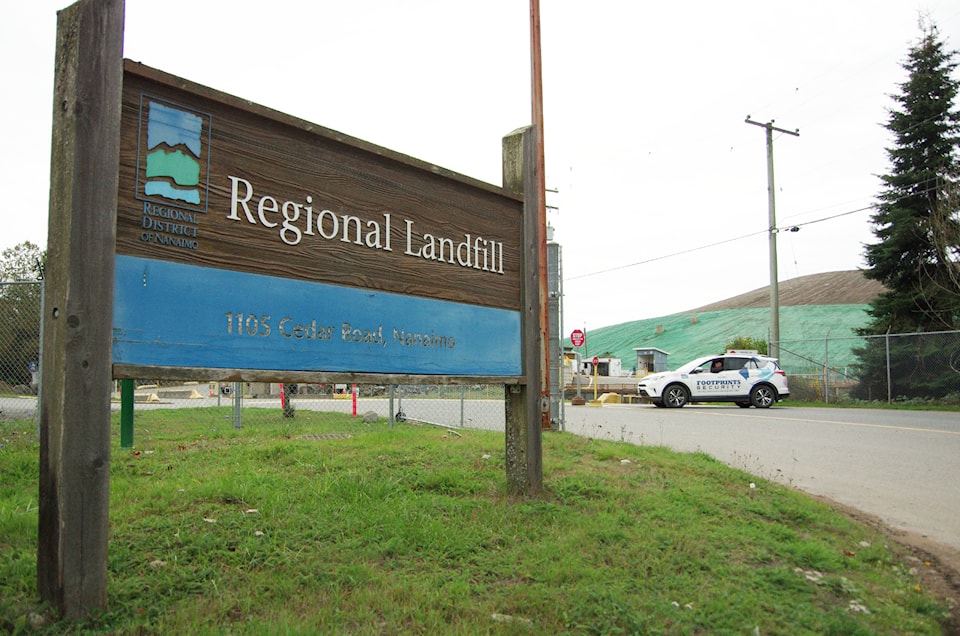A garbage-shredding machine will continue to be used in the short-term as the Regional District of Nanaimo works to extend the life of the Cedar landfill.
The equipment has been tested at the garbage yard since March 2022, noted an RDN staff report, and at a meeting Oct. 1, the solid waste management committee unanimously voted in favour of providing money in the 2025-29 budget to fund use of the machine for three more years. Continued use of the shredder carries a price tag of approximately $3.75 million.
Research conducted by staff in this spring showed the resulting "apparent density of the airspace consumed" was 1.29 tonnes per cubic metre, better than the five-year average of 0.93 tonnes per cubic metre achieved without a shredder, according to a report.
That number represents a 39-per cent improvement, said Chad Hermanson, RDN engineering technologist, speaking with the committee. As a comparison, the highest density reached in 2023 was 1.01 tonnes per cubic metre.
The shredder is projected to extend landfill life significantly. Ben Routledge, RDN solid waste services manager, told the committee without the use of a shredder, the landfill is estimated to last until 2043. Currently, 67 per cent of waste is being diverted, with the RDN aspiring for 90 per cent. Higher diversion, coupled with shredding, will further extend the landfill's life, according to staff. At 80 per cent diversion, the landfill is projected to be open till 2058, at 85 per cent the yard is estimated to be open until 2070 and if the 90 per cent goal is reached, the site can last until 2078, staff projects.
Routledge said the introduction of a waste shredder has allowed the size of received material to be reduced and a more homogenous state created.
"In turn, this allows higher compaction density to be achieved over the entire active landfill cell," he said. "In 2023 and more so in 2024, through waste shredding, the use of GPS telemetry and staff training, we've been able to achieve a compaction ratio of greater than 1:1, resulting in not only highly accurate cost recovery, but substantially decreased airspace consumption."
While RDN staff stated that use of shredders, and the accompanying higher waste compaction, could lead to less leachate and greenhouse gas and greater landfill stability, the advantages "are still not fully understood."
Continued usage of the machinery will allow staff to further examine positives and negatives and report back to the board on results.



